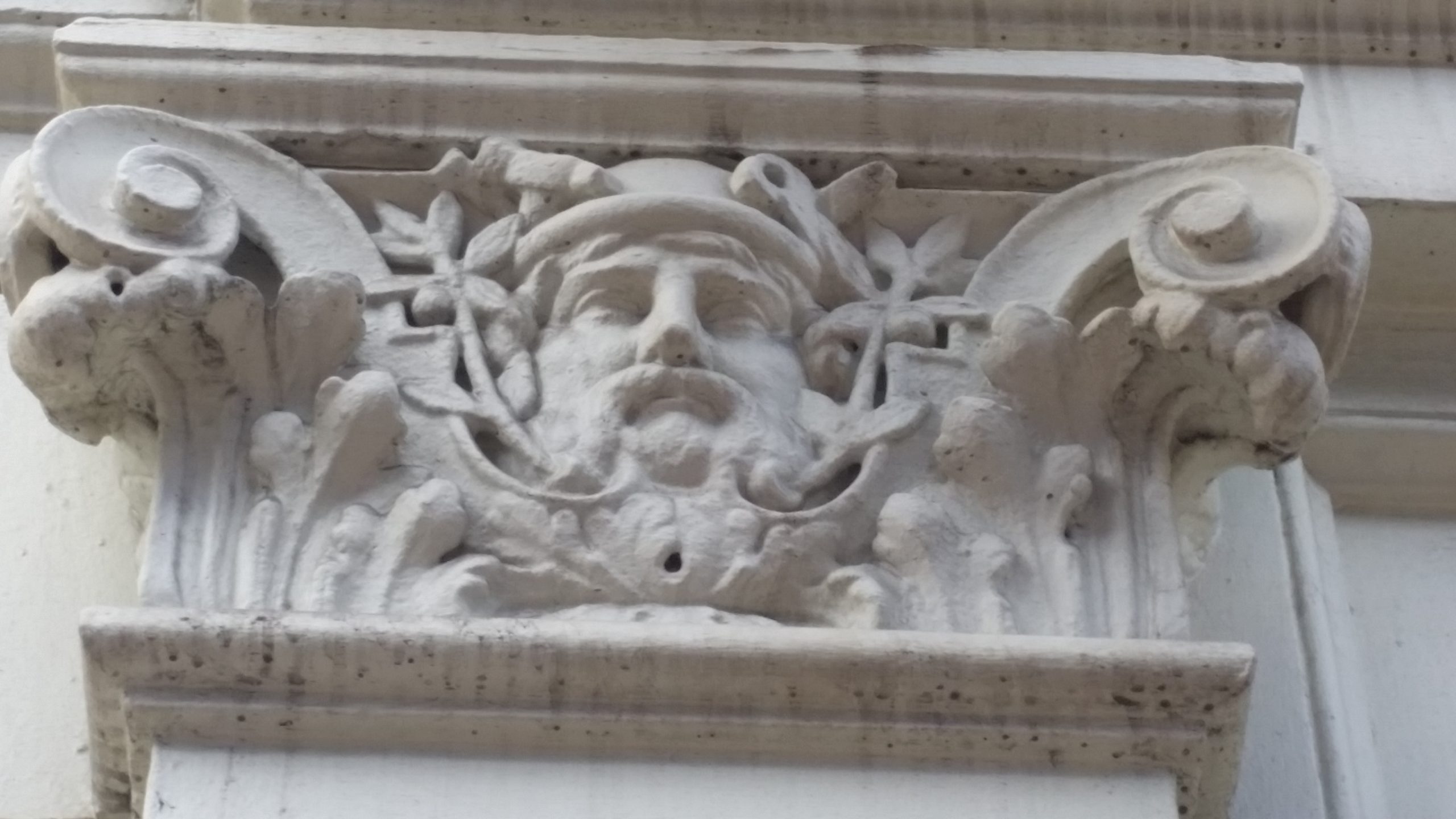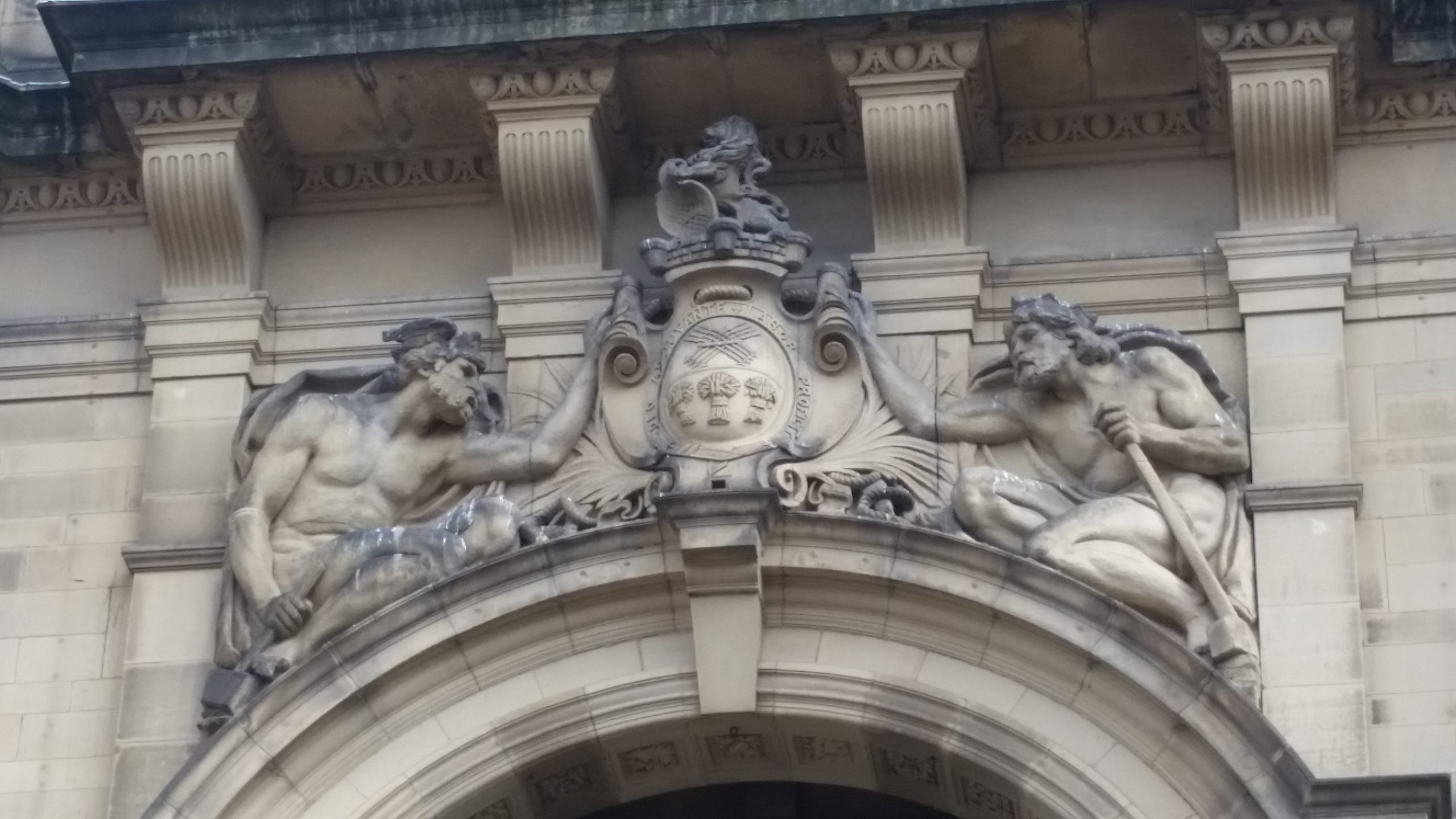A Multimedia Exploration of the Story of Vulcan, Blending Film, Poetry, Sound, Music, Art and Science
For this post, I’m grateful to have had access to a copy of a small booklet written by Sylvia Pybus entitled Vulcan: From Mount Olympus to Sheffield, published in 1997 by Hammer and Tongs.
In the booklet, Pybus lists the appearance of Vulcan on buildings around Sheffield’s heart, which set me on my own Vulcan trail.
I hadn’t realised how frequently the Roman god of fire, forges and volcanoes had been looking down on me as I walked around the city – from the elaborate entrance to the Town Hall to the mid-20th century former Co-op Castle House building.
Most of the time he is depicted in heroic style – strong, muscular, handsome, head of curls (with the exception of the fibreglass Co-op version). This contradicts the story of the god.
Vulcan was the son of Jupiter and Juno, the Roman equivalent of the Greek god Hephaestus. On first seeing him, Juno rejected him. Mythology states Vulcan was born limp with facial disfigurements so his mother threw him off Mount Olympus. Other versions claim he became lame as a result of the fall.
The infant god was brought up by the sea-nymph Thetis in an underwater cavern on the island on Lemnos, where he learnt the skills of a smithy. Again, versions of the story differ, but an intriguing one, which I have drawn on for the narrative for the film, is that he found a smouldering ember in a fire left by a fisherman and carried it back to his cave.
From the ember he created fire with bellows – and noticed that the cavern’s rock ‘sweated’ minerals – silver, gold, iron.

Vulcan over the door of the Hutton’s buildings on West Street, Sheffield. Photo Credit. C.Waudby
The young Vulcan perfected the art of shaping and moulding metal, making tools and gifts, including intricate and beautiful jewellery, and cutlery. When older, he moved to Etna where he created a mighty forge in the heart of the mountain. This allowed to extend his metalwork skills even further. And here the link with Sheffield is made.
In the second half of the 19th century, when industry in Victorian Britain was undergoing a massive expansion, figures from myth and legend became popular in literature and art. It was at this time that Sheffield ‘adopted’ Vulcan as a symbol of its burgeoning steel making.
I’ll be writing more about Vulcan, the mythology and the poetry in future blog posts!
Blog by Carolyn Waudby

We’d love to hear from you as we develop the Cradle of Fire project. Please use the contact page to get in touch.
Cradle of Fire is a research and development project, supported by public funds from Arts Council England. We are also grateful for support from our partners and creative collaborators. Read more on the dedicated About pages.
Check our progress to date and future plans via the timeline